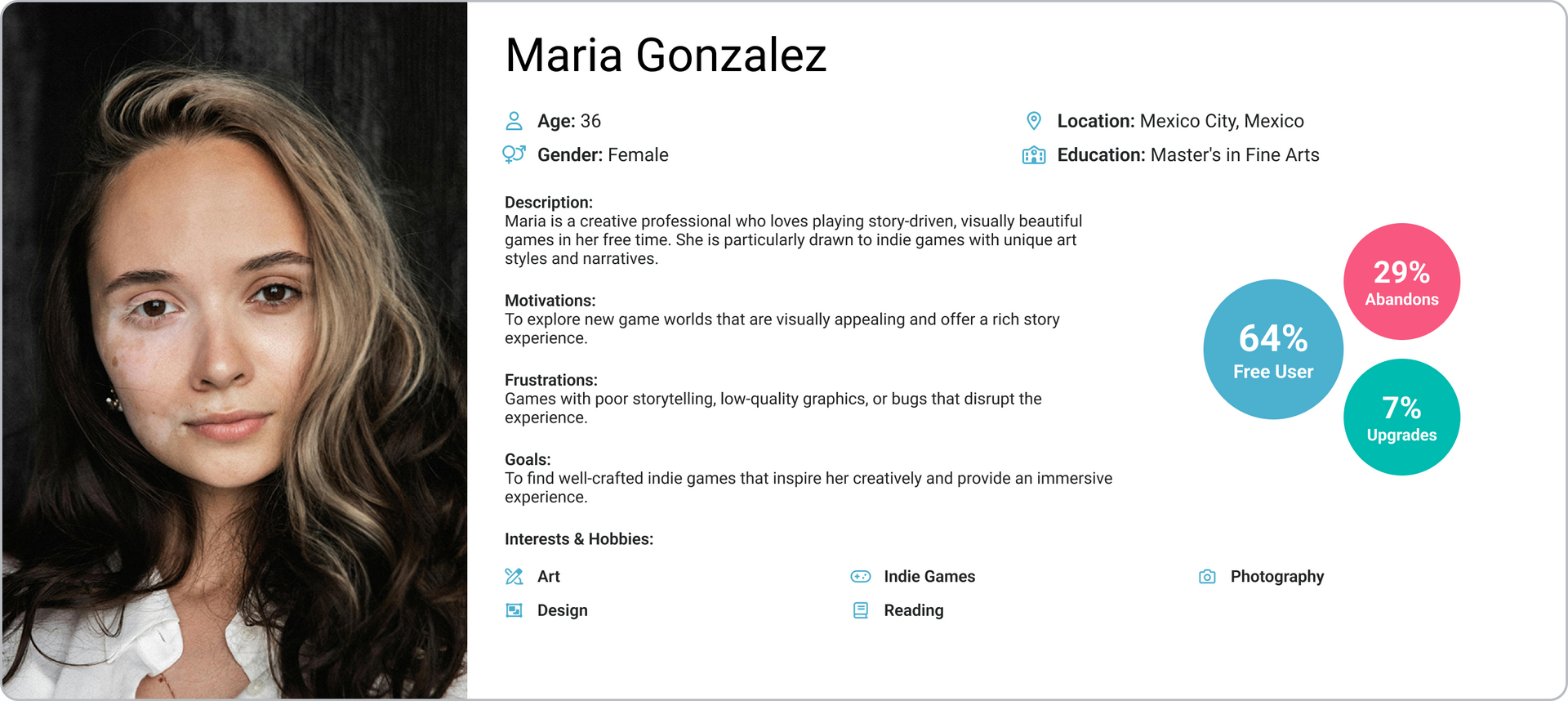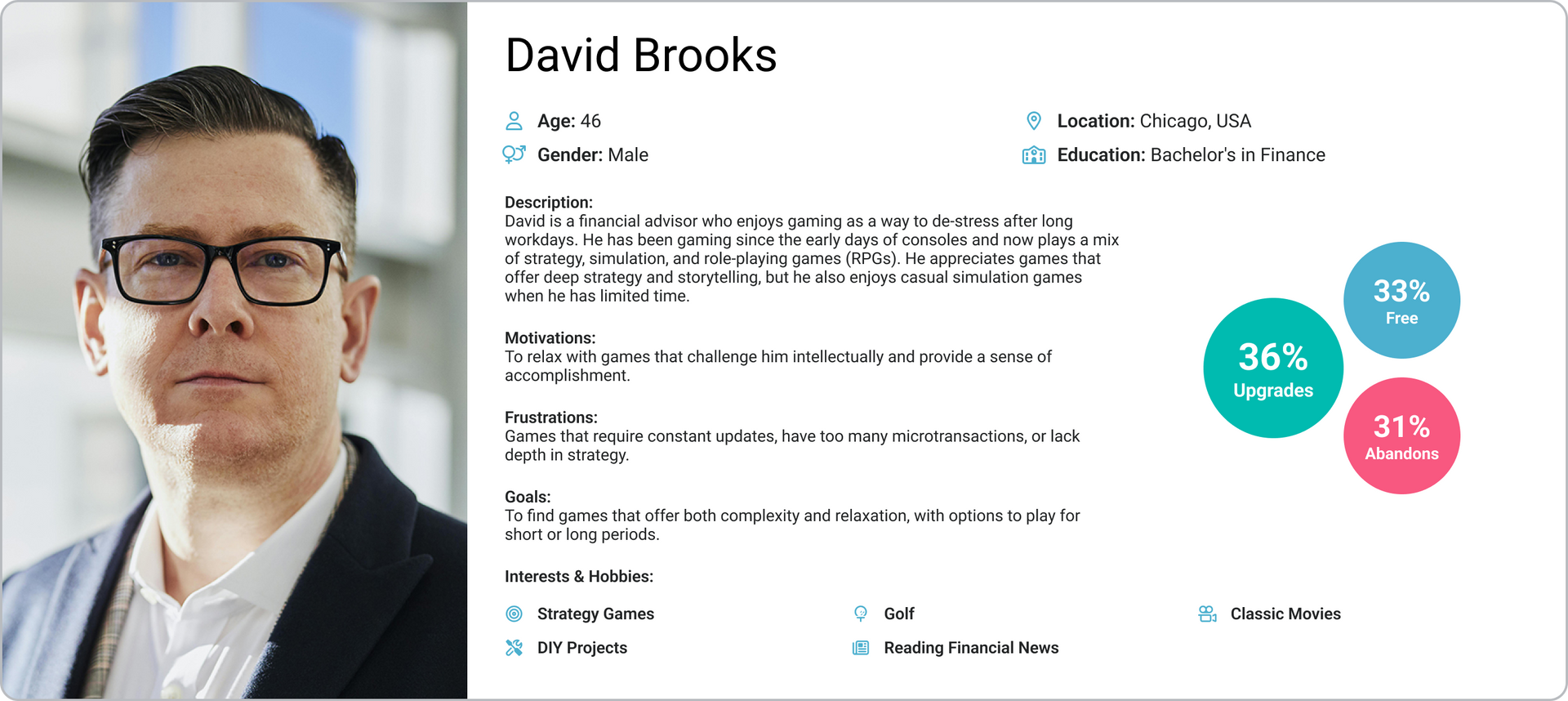USER PERSONAS
Crafting these personas through research and analysis, I ensure that every design decision aligns with the real needs and behaviors of users. These profiles help guide the design process, providing clarity on who the product is for and how it can better serve their needs.








